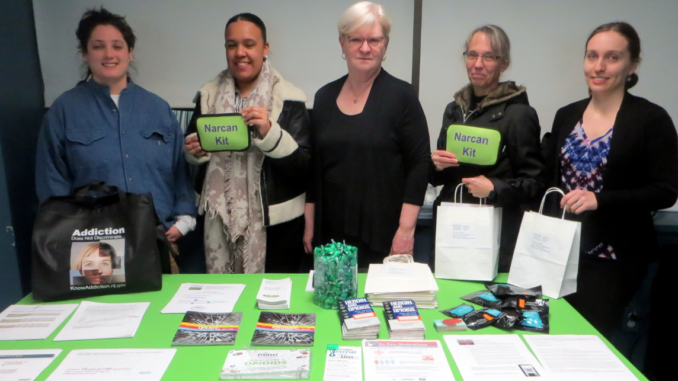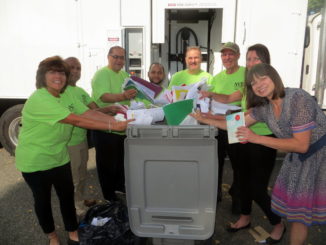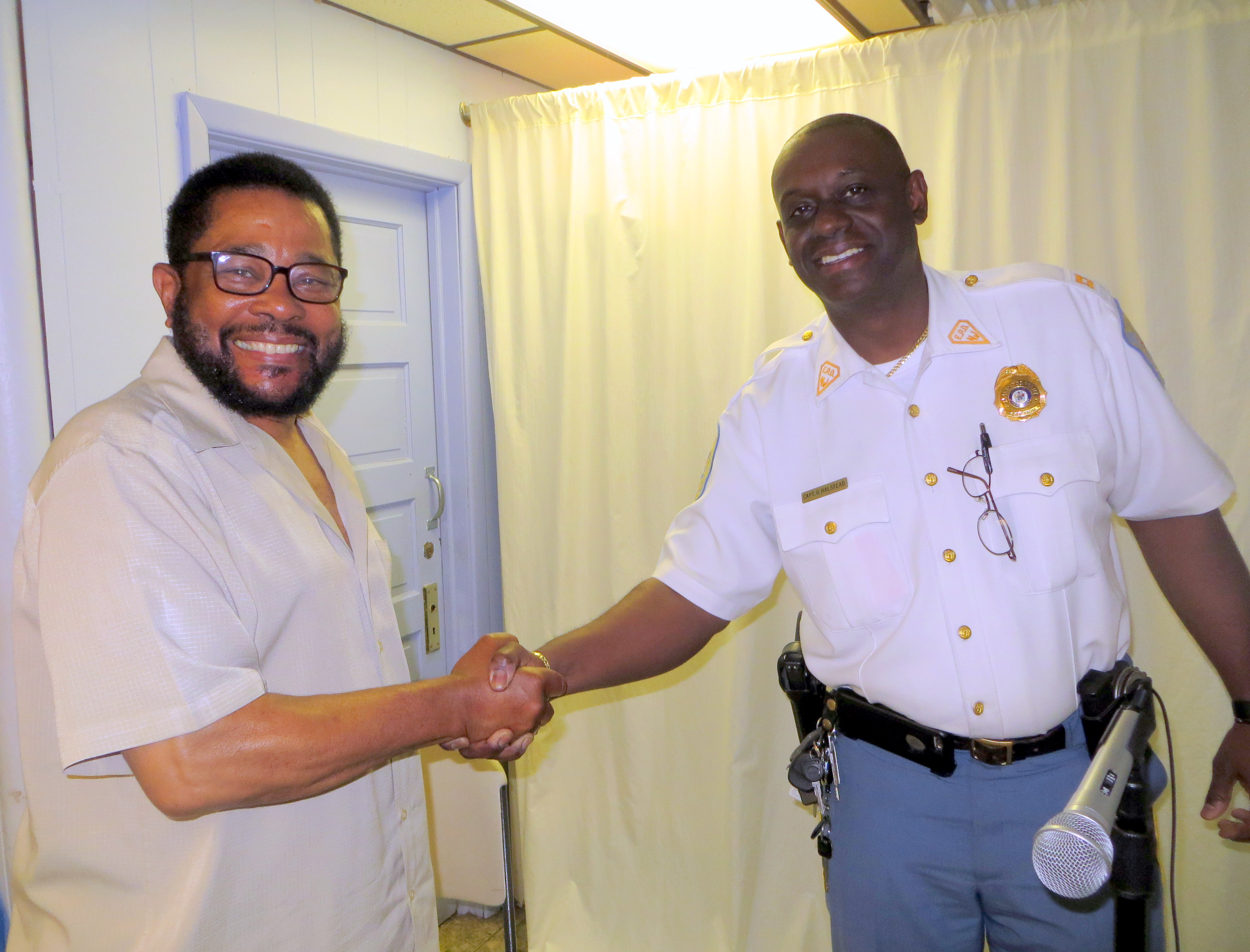
ENGLEWOOD, N.J.—As concerns surround the country’s escalating opioid addiction crisis, the Englewood Department of Health recently organized a training session on how to us a nasal spray that rapidly reverses opioid overdoses.
NARCAN, or Naloxone, has become an increasingly-used lifesaving tool and the health department taught about 20 people how to use it on Jan. 23. The department also distributed free NARCAN kits containing a 4-milligram nasal spray, a plastic rescue breathing shield, latex-free gloves and an instruction sheet to all participants.
According to www.allgov.com, the United States represents less than 5% of the world population yet is responsible for 80% of the world’s opiate consumption. The number of drug overdose deaths has never been higher, and the majority of these deaths involved opioids.
According to the Centers for Disease Control, there were more than 3,100 overdose deaths in New Jersey last year. Law enforcement and EMS have administered Naloxone 27,442 times over the last two years.
People at the Englewood NARCAN training session were surprised to learn that opioid addiction may take many forms, from unregulated heroin and fentanyl to misuse of prescription drugs.
In the U.S., every day 2,500 youths take prescription pain relievers for the purpose of getting high for the very first time, according to the Office of National Drug Control Policy.
There are even opium derivatives in some popular over-the-counter medicines, such as Imodium AD (for diarrhea) and cough syrups.
As such, NARCAN is now being given to lay people as well as professional rescuers. On June 18, 2019, the Department of Human Services distributed more than 32,000 free doses to 16,000 New Jersey residents to help them be prepared to respond to an overdose.
Last year, the U.S. Surgeon General issued a public health advisory, encouraging Americans to carry NARCAN because it is a critical part of the fight to end the opioid epidemic.
New Jersey Department of Human Services Commissioner Carole Johnson said, “Expanding access to Naloxone is a key part of the Murphy Administration’s strategy to save lives and combat the opioid epidemic.”
The training session in Englewood was led by Caroline Bailey, a certified peer recovery specialist from Center of Addiction Recovery, Education and Success (CARES).
Bailey’s own story of addiction was gripping. At age 14, she went from being a typical teenager who liked to party to a heroin addict that turned her life upside down every day for more than six years.
Multiple overdoses, detox, rehab, halfway houses, and finally AA meetings were steps in her harrowing journey.
“After the first year of becoming addicted, I didn’t even take heroin to get high. I just needed it to stop the unbearable withdrawal symptoms, like the flu multiplied by 100 times—agitation, muscle aches, restlessness, anxiety, runny nose, excessive sweating, inability to sleep, diarrhea, abdominal cramping, nausea and vomiting, skin goosebumps, dilated pupils, rapid heartbeat and high blood pressure.”
Bailey gave a thorough presentation that began with an explanation of how opioids attach to the brain receptors and it causes the breathing to slow down and eventually stop.
NARCAN knocks the opioids out of them 2 to 4 minutes after being administered. She also said that NARCAN will not work if used for substances other than opioids, such as alcohol or marijuana.
Most importantly, she explained how to recognize the signs and symptoms of an overdose, prevention strategies, overdose legal rights and then demonstrated how to administer NARCAN as well as rescue breathing.
The signs and symptoms of an overdose are: the person is unconscious; you are not able to wake the person; the person has slow or shallow breaths or looks like he is not breathing; the person is cold and clammy; the person has pinpoint pupils; there is a “death snore.”
Bailey explained that these effects are the result of opioids attaching to the brain receptors, and that NARCAN replaces the opioids in the receptors and helps the person wake and keep breathing. However, NARCAN only remains in the body for 30 to 45 minutes after which another opioid emergency may take place, requiring another dose of NARCAN.
There are also things that make someone more susceptible to an overdose, such as smoking, alcohol, emphysema, asthma, sleep apnea and COPD.
How do you respond to an overdose? The event outlined these step-by-step actions to take: always call 911; check for signs of an overdose; perform rescue breathing; administer NARCAN and monitor the response of the person; continue rescue breathing if the person is unresponsive; and stay with the person until 911 rescue arrives.
The training session also highlighted what not to do in the event of an overdose: don’t leave the person alone; don’t throw water or ice on them; don’t try walking them around; don’t put them in the shower; don’t force them to eat or drink; and don’t let them sleep it off.
Bailey emphasized that the Good Samaritan law protects lay rescuers as well as overdose victims from criminal or civil liability, so you should always try to help. Even if you are not sure if a person has overdosed, use NARCAN anyway, as it has no side effects.
The session also provided resources for opioid addiction, such as CARES, which offers peer-to-peer and telephone support as well as recovery meetings. Trained CARES volunteers make weekly phone calls to people in recovery to “check in” and see how they’re doing.
People in recovery are given support and encouragement as well as information about community resources, 12-step meetings or other supports that may help them maintain their recovery.
Other resources include the addiction hotline for New Jersey, 844-276-2777; 1-888-662-HELP, a confidential hotline; and the Substance Abuse and Mental Health Services Administration that you can log into on findtreatment.samhsa.gov.
If you or someone you know is struggling with drug addiction, it’s best to have a plan to respond to an overdose. Know where your NARCAN kit is stored and make sure it’s kept at room temperature. Share your information with others and encourage them to get training, the training session encouraged.
NARCAN nasal spray is available without a prescription at numerous state-licensed participating pharmacies across New Jersey, such as CVS and Rite Aid. Participating pharmacies can be found at nj.gov/humanservices/stopoverdoses.
NARCAN can also be obtained at many major chain grocery stores including Shop Rite, Wegman’s and Costco. Opioid Overdose Prevention Programs and all seven Harm Reduction Centers also dispense NARCAN without a prescription.
Some medical programs cover NARCAN if ordered by prescription.
The recent NARCAN training event was organized by Deborah Baldwin, Englewood’s Municipal Alliance coordinator and assistant to Englewood Health Director Jim Fedorko. Assisting Baldwin was Denise Dominguez, Alliance assistant coordinator and deputy license clerk.



